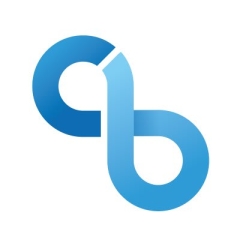What is our primary use case?
We started with the continuous integration product and have now adopted continuous deployment for my current projects. We have a cloud-based product for other environments, like our dev environment and one of our CAT environments. These are the two environments we are using right now. Initially, we mainly used CloudBees for continuous integration. Now, we are utilizing both CloudBees for continuous integration and CloudBees CD for deployment.
When a build starts in CloudBees, it progresses from continuous integration to continuous deployment and monitoring. These are the three areas we're focusing on. We have successfully onboarded over 150 applications, which allows us to gather deployment and CI/CD pipeline metrics. We also have a dedicated service template for different application types, such as Java with Maven, .NET using MSBuild, and Node.js.
We use CloudBees for continuous integration, deployment, and monitoring. We also started leveraging CloudBees CD Analytics for enhanced metrics and insights.
How has it helped my organization?
We deploy several applications using ECS and EKS, enabling us to achieve blue-green deployments. This allows for rolling updates and changes, benefiting many of our customers.
Another important aspect is our analytics capabilities. By leveraging these analytics, we can identify areas for improvement and increase our deployment frequency. We can predict trends and forecast business needs.
What is most valuable?
We are a centralized team that provides all the CI/CD and automation best practices for our internal teams. We chose a cloud-based product because it allows for end-to-end process automation. Using Cloud-based CI and CD, we can achieve effective release orchestration, enabling us to plan new releases efficiently.
One standout feature is build promotion. With this feature, we can promote builds across different environments with a single click, simplifying our workflow significantly. Additionally, we can easily identify where errors occur at any stage, making it straightforward to resolve issues.
Our automation supports not only on-premises deployments but also integrates with cloud solutions like AWS, GCP, and Azure. This flexibility allows us to deploy in both on-prem and cloud environments.
What needs improvement?
When I started with CloudBees, I found the configuration at the CD level to be quite challenging when creating end-to-end orchestration or release execution flows.
If industry-standard templates were available—based on surveys of what other companies are doing with their deployment models—it would simplify the configuration process. Collecting this information and providing standardized templates would make it much easier for teams to configure and use the platform.
Most of our configurations were done manually. On the CI side, customization options or APIs could improve the experience when dealing with Kubernetes execution or pod template configurations.
It would be beneficial to integrate AI solutions like ChatGPT into our CI and CD processes. Many distributed networks and CI tools, like GitLab, are adopting such integrations.
For how long have I used the solution?
I have been using CloudBees for three and a half years.
What do I think about the stability of the solution?
When we started using cloud technologies, we faced initial challenges. We initially opted for CloudBees and later integrated CloudBees CD. We encountered setup and stability issues at that time, including connectivity problems and occasional downtimes. The system is now running smoothly.
What do I think about the scalability of the solution?
It's scalable because we've deployed it on high-throughput servers, allowing for efficient operation. The applications can be deployed without any interruptions.
We have 200+ users using this solution.
How are customer service and support?
When we interact with the CloudBees team, we utilize the CloudBees University for support. This platform provides access to technical expertise, and if we need customized solutions, we can reach out to CloudBees representatives through the university.
How would you rate customer service and support?
How was the initial setup?
When I started working with CloudBees, we focused on creating service catalogs. Given that we have over 2,000 components and applications, we follow various deployment strategies, including ECS-based, SAML-based, and Windows IIS-based deployments. Each of these requires specific template configurations.
We also explored blue-green deployments involving customized configurations we've implemented externally. While I’ve noticed some templates already available, expanding the library of deployment strategy templates would be beneficial. Adding templates for Tomcat, WebLogic, WebSphere, and Node.js deployments would enhance support for our diverse solutions.
Once we onboard an application, we hand off the maintenance and deployment responsibilities to the application team. Our role is to provide the initial solution and support them in getting started.
We have a team of twenty. It takes us one or two days to onboard a new application. This efficiency is due to our well-defined templates and process documentation. When a new application team approaches us for their DevOps journey, we can onboard them quickly, often within one or two days, with an end-to-end solution.
We assess their current deployment setup. If it aligns with our existing processes, we begin onboarding immediately. If not, we work with them to create a suitable deployment model. We have a solid understanding of our major deployment procedures, which allows one person to establish a complete end-to-end solution in about a day.
Once the application is onboarded, the application team takes over the entire release flow. We’re available to provide guidance and support if they encounter any issues or need training.
What other advice do I have?
Even with full automation, some level of maintenance is necessary. Currently, we have a dedicated SRE team to handle this. Our DevOps journey with CI/CD involves a combination of various tools, not just the CloudBees CD product.
Some applications are heavily dependent on GitLab. We are currently focusing on migrating a few of these applications and building them directly on GitLab.
I recommend this solution for smaller projects or teams, as it can be quite effective for them. For those seeking a consolidated CI/CD and comprehensive metrics solution, CloudBees CD is an excellent choice.
Overall, I rate the solution an eight out of ten.
Disclosure: My company does not have a business relationship with this vendor other than being a customer.















